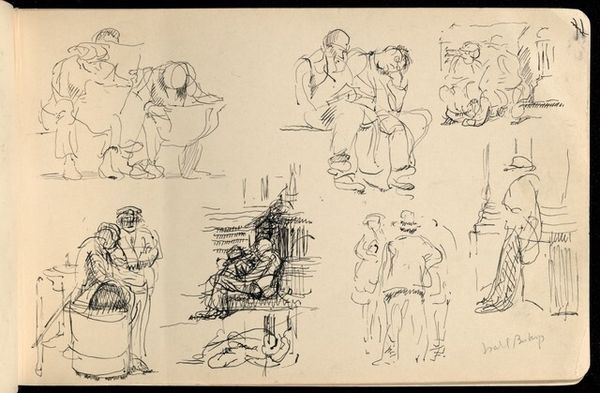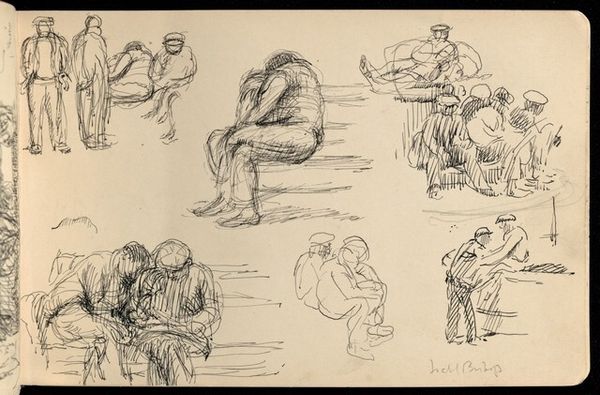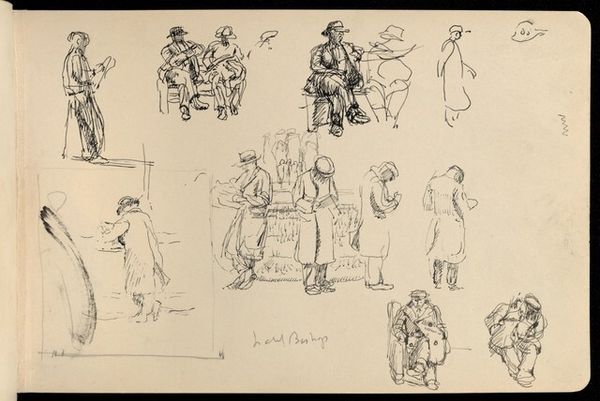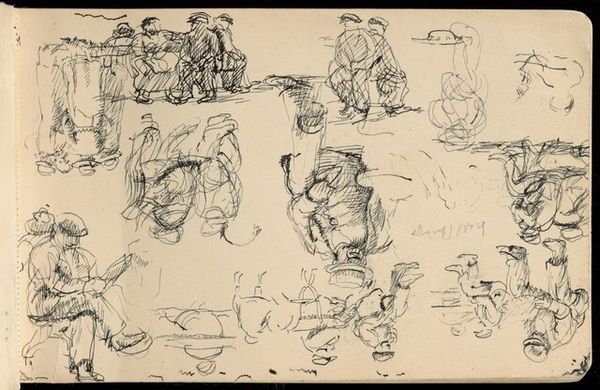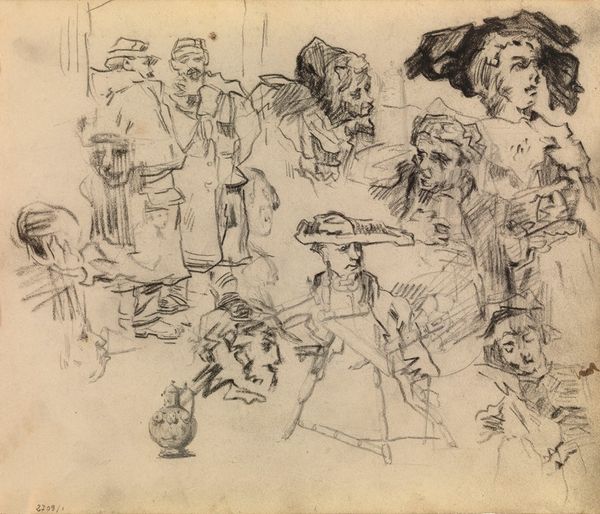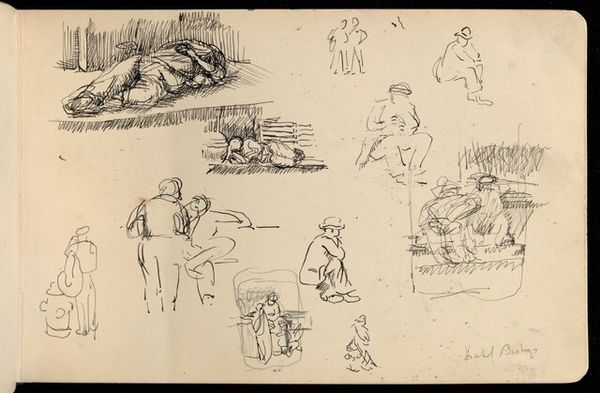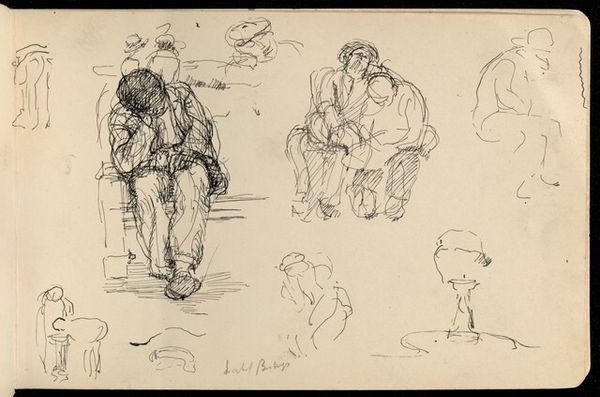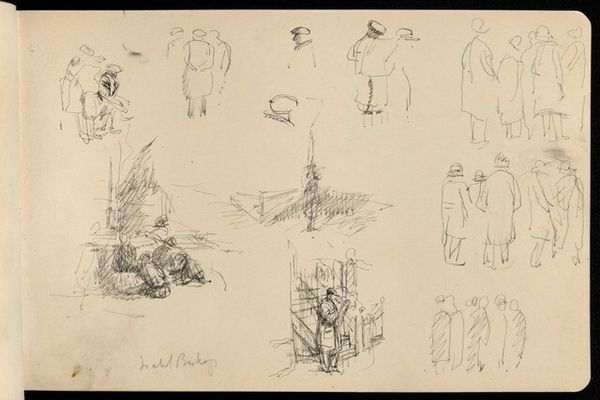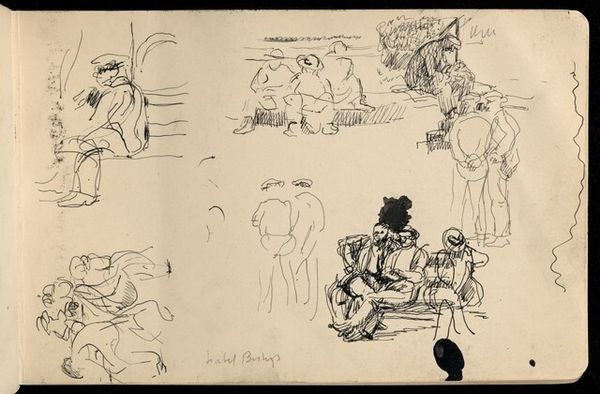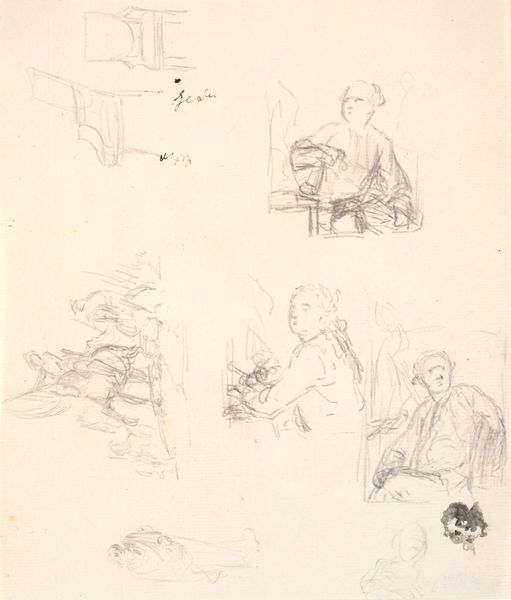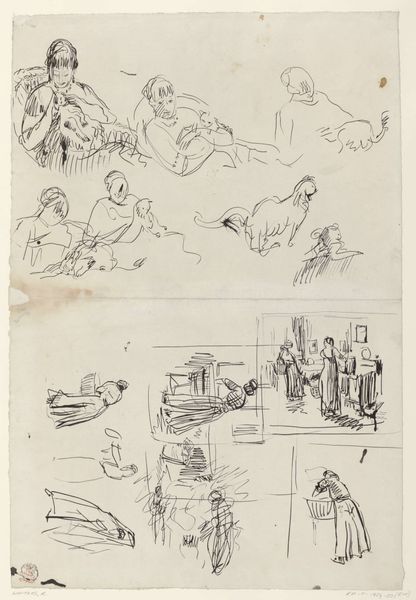
drawing, paper, ink
#
portrait
#
drawing
#
figuration
#
paper
#
ink
#
line
#
genre-painting
#
modernism
Copyright: National Gallery of Art: CC0 1.0
Editor: So, this is Isabel Bishop's "Early Sketchbook," dating from around 1928 to 1936. It's ink on paper, full of sketches of figures. The loose lines make it feel very spontaneous, capturing everyday life. What do you see in this piece? Curator: I'm immediately drawn to the act of making visible. The raw materials – paper and ink – are presented without much intervention, prioritizing process over polished product. The quickly sketched figures, depicting ordinary people, remind us that artistic labor, much like other forms of labor, captures fleeting moments within the social fabric. What can we infer about Bishop's daily routines, and what are the broader material conditions allowing for this type of artistic practice? Editor: That's interesting – framing it as a record of labor, not just observation. Do you think the 'everydayness' she captures challenges established artistic hierarchies? Curator: Absolutely. Consider where Bishop chose to focus her artistic energies. By representing these quotidian scenes, and foregrounding the materiality of the art making process itself, she effectively democratizes the act of artistic representation. Where might these figures have been located? Did Bishop engage with them? Consider that each rapid sketch requires certain type of action from the artist herself; she physically occupied and engaged within the location with her subjects and their everyday surroundings. The physical constraints or possibilities also shaped the form and content of these sketches. Editor: I hadn’t thought about it that way – focusing on the social interactions and materials rather than just the composition. Curator: It forces us to acknowledge that art-making is itself a material activity, influenced by the artist’s position in society, the accessibility of resources, and the types of labor that the artist values and renders visible. Editor: I'm definitely seeing this piece in a new light. It's less about the final image and more about the context and the artistic work behind it. Curator: Exactly! Now we are moving towards understanding that Bishop’s work is far beyond just pretty sketches; it shows the social, cultural and economic realities.
Comments
No comments
Be the first to comment and join the conversation on the ultimate creative platform.
